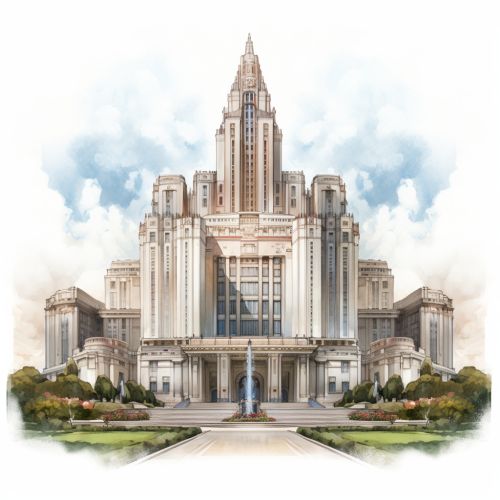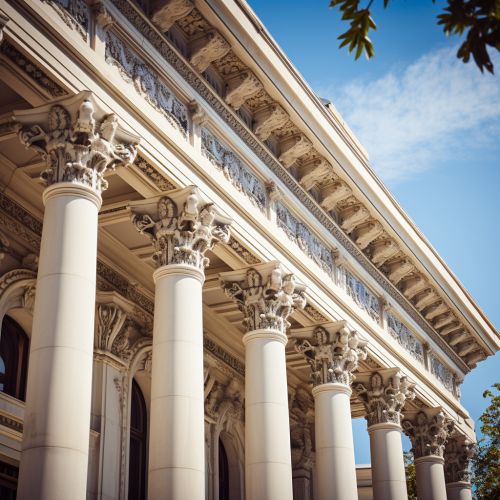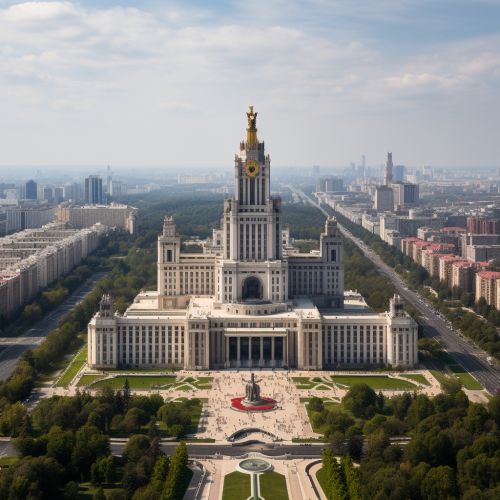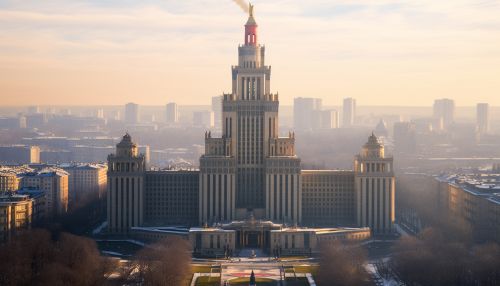Stalinist Architecture
Overview
Stalinist architecture, also known as Stalinist Empire style or Socialist Classicism, is a term given to the architecture of the Soviet Union under the leadership of Joseph Stalin, between 1933 and 1955. This architectural style was characterized by its grandiose scale, symmetry, and the use of decorative elements borrowed from classical architecture. Stalinist architecture is considered a type of Socialist Realism, a style that was the official art policy in the Soviet Union from the early 1930s to the mid-1950s.


Historical Context
Stalinist architecture emerged in the 1930s as part of Stalin's vision for a new, modern Soviet Union. It was a departure from the earlier architectural styles of the Russian avant-garde, which had been characterized by a commitment to innovation and experimentation. Stalinist architecture, in contrast, was marked by its adherence to traditional architectural forms and its emphasis on monumentality and grandeur. This was a reflection of Stalin's desire to project an image of strength and stability, both domestically and internationally.
Characteristics
Stalinist architecture is characterized by its grand scale, symmetry, and the use of decorative elements borrowed from classical architecture. Buildings in this style are often monumental in size, with large, imposing facades. They are typically symmetrical, with a central tower or dome, and wings or colonnades on either side. The decorative elements used in Stalinist architecture are often borrowed from classical architecture, including columns, pediments, and friezes. These elements are used to create a sense of grandeur and majesty, reflecting the power and authority of the Soviet state.


Notable Examples
There are many notable examples of Stalinist architecture in the former Soviet Union. One of the most famous is the Moscow State University Main Building, which was completed in 1953. This building is one of the "Seven Sisters", a group of seven skyscrapers in Moscow that were built in the Stalinist style. Other examples include the Palace of Culture and Science in Warsaw, Poland, and the House of the Free Press in Bucharest, Romania.


Criticism and Legacy
Stalinist architecture has been criticized for its grandiosity, its lack of innovation, and its association with the totalitarian regime of Joseph Stalin. However, it has also been praised for its craftsmanship and its ability to create a sense of awe and majesty. Despite its controversial nature, Stalinist architecture has had a lasting impact on the architectural landscape of the former Soviet Union, and many buildings in this style are still in use today.


